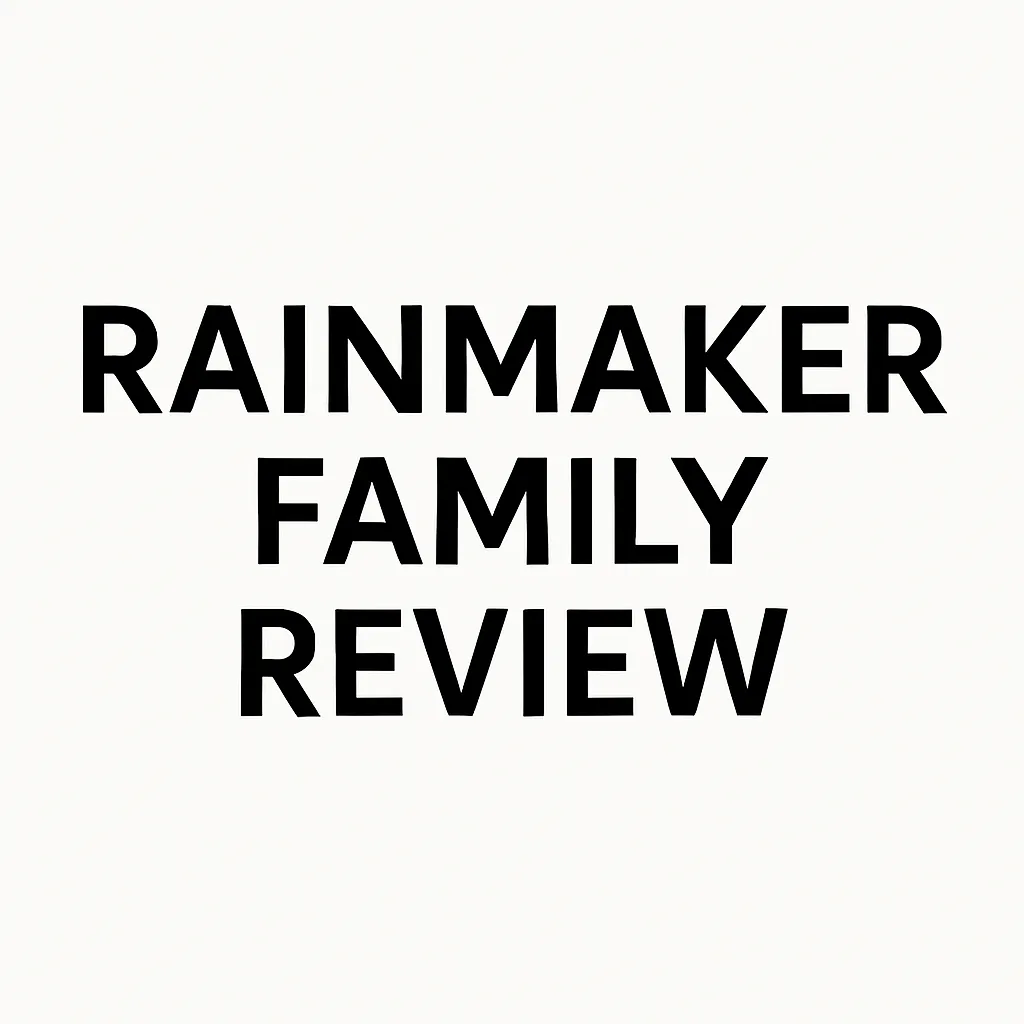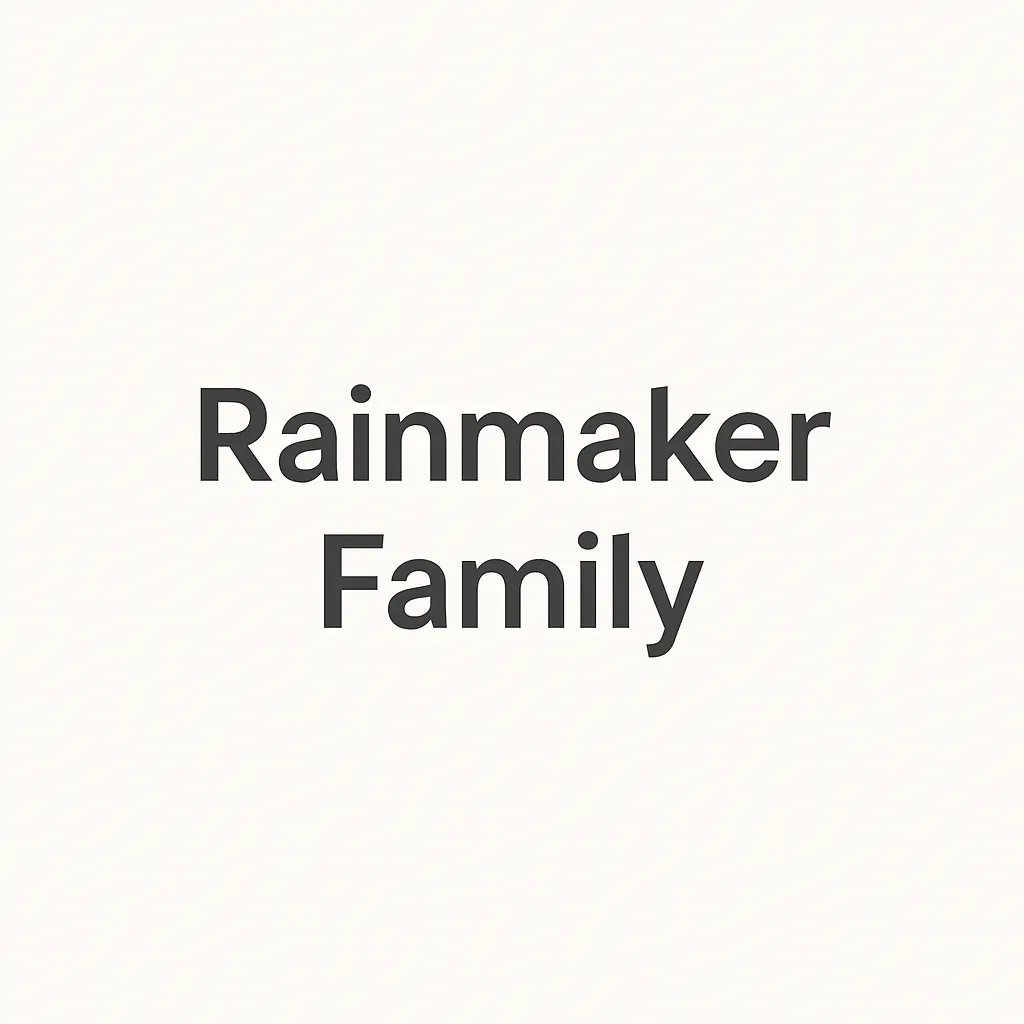Rainmaker Family Review - Here's My Experience With This High Ticket Program
Welcome to this Rainmaker Family review. This is the higher-ticket program that comes after the Rainmaker Challenge.
While the Challenge is positioned as a low-cost introduction, the Family offer is marketed as the deeper, more hands-on path to actually building a profitable Amazon FBA business.

The program focuses on mentorship, community accountability, and ongoing coaching that goes far beyond the surface-level seven-day experience.
The pitch is that if you’re serious about creating long-term income, this is the step where you need to commit.
What that really means, though, is a jump from a small monthly subscription into a multi-thousand-dollar investment.
Some students do report stronger outcomes at this stage — better product selection, more structured launches, and access to insider guidance.
But there are also plenty of mixed results, with some participants pouring in thousands for inventory, ads, and coaching only to find that profits don’t arrive as quickly as promised.
Pros
Ongoing mentorship and coaching beyond the Challenge
Tight-knit community that encourages accountability
Structured guidance for scaling Amazon FBA
Cons
High cost, often several thousand dollars to join
Additional expenses like ads and inventory can pile on
Results vary widely despite polished success stories
There’s a deeper reason most people never see results, and I found something that finally connected the dots here.
What is the Rainmaker Family?
When I finished the seven-day challenge, I was introduced to the next level of their system.
It wasn’t pitched as just another course, but as a step into a more private mastermind.
The way it was explained to me, this was where people went when they wanted to stop experimenting and actually treat Amazon FBA as a long-term business.
Instead of daily bite-sized lessons, this higher-ticket tier was described as ongoing mentorship.
I was told I’d get access to regular coaching sessions, advanced tools for finding and validating products, and direct feedback that went deeper than the entry offer.
The main selling point was accountability — the idea that with this level of guidance, I wouldn’t have to waste months on trial and error.
They also emphasized community. I was shown how the inner circle was smaller and more selective, with members who were “all in.”
The message was that being in this environment would create momentum that I couldn’t get if I stayed at the beginner stage.
It was framed as both exclusive and necessary — a place where transformation happened only if I was willing to commit financially.
That’s how the upsell was presented to me: not just as a course, but as the bridge between dabbling and running a serious e-commerce operation.
My Personal Experience With Rainmaker Family

Sitting through the presentation for the higher-tier offer, I remember feeling a mix of excitement and hesitation.
The tone shifted from the challenge being fun and light to something much more serious.
The message was clear: if I wanted to actually see results, this was the step that separated casual learners from those who went all in.
What stood out most was how polished the pitch was. I wasn’t just told about coaching calls or tools; I was shown success stories, screenshots, and examples of people who supposedly scaled quickly after joining the inner circle.
At the same time, I noticed how the conversation leaned heavily on urgency. I was told there was limited room, that spots were filling, and that waiting could mean losing momentum.
The investment itself weighed on me. Moving from a small upfront cost to a multi-thousand-dollar price tag isn’t something to take lightly.
I found myself running through the math — not just the coaching fee but also inventory, ads, and all the hidden costs that come with building an FBA store.
It was clear that saying yes meant committing to far more than the initial program.
On the positive side, I did like that there was a structured path and community accountability.
Having a group that was supposedly pushing forward together did feel motivating.
But the pressure to commit quickly, combined with the financial leap, made me step back and question whether this was truly the right fit for me at that time.
It became clear that the real challenge wasn’t whether the system worked, but whether I was ready to take on everything it demanded.
That question alone reminded me of a lesson I wish I had learned earlier — and you can see it broken down in detail here.
How Much Does Rainmaker Family Cost & What's The Refund Policy?
When I reached the point where the cost was revealed, it honestly hit me harder than I expected.
After paying a small fee to join the challenge, the next step jumped into the thousands.
The way it was framed to me, this higher tier wasn’t just about videos or modules — it was pitched as access to mentors, private coaching, and tools that would supposedly shorten the learning curve.
What threw me off was how the numbers weren’t always consistent. In my case, I was quoted just under $5,000 as a one-time payment, with the option to break it down into installments.
I later found out that some others were given slightly different figures, depending on how the conversation went.
That added to my hesitation, because it didn’t feel like a transparent, flat rate.
The refund policy didn’t bring much comfort either. I was told there was a guarantee, but only if I could prove that I completed every step as instructed.
That meant documenting research, submitting screenshots, and essentially showing that I had put in all the work without results.
To me, it felt less like a safety net and more like a barrier to getting money back if things didn’t work out.
Weighing it all, the real decision wasn’t just about whether I believed in the system.
It was about whether I was ready to lock away that much money upfront, knowing that inventory, ads, and other expenses were still waiting on the other side.
What Are The Student Results and Testimonials?

When I first looked into what others were saying after joining, I noticed a pattern.
The success stories that were shown to me during the sales pitch painted a very polished picture — screenshots of revenue, stories of families quitting their jobs, and glowing comments about freedom. But when I dug deeper, the reality seemed more uneven.
I came across people who had made progress, yes, but it was usually tied to big upfront spending on products and ads.
A few were celebrating their wins, but I also saw plenty of posts where students admitted they hadn’t broken even after months of effort.
That gap between the highlight reels and the less glamorous results stuck with me.
One thing I paid attention to was how testimonials were framed. The ones highlighted inside the community or in marketing emails always leaned toward the most positive outcomes.
Meanwhile, in outside reviews or comment sections, it wasn’t unusual to see people saying they felt pressured into joining and then struggled to keep up financially.
That contrast left me torn. On one hand, it was encouraging to see that the system had worked for some.
On the other, it was obvious that those stories weren’t universal. What I saw most often was a mix — a few breakthroughs, many slow grinds, and some outright frustrations.
It made me realize that while the support could help, it wasn’t going to erase the financial and personal risk involved.
Who is the Rainmaker Family Best For?
As I sat through the presentation and looked closer at what was being offered, it became clear who this kind of program really speaks to.
The coaching, the community, and the push for accountability seemed designed for people who already had some financial breathing room.
If someone was hoping to start with just a few hundred dollars, this wasn’t going to be a realistic fit.
From what I saw, the people who seemed to thrive inside the mastermind were those with capital set aside and the patience to handle the long ramp-up that comes with Amazon FBA.
They were the ones treating it like a business investment rather than a side hustle.
The ones who struggled tended to be those who joined with the expectation of fast results or who underestimated the cost of inventory and ads after the coaching fee.
That doesn’t mean the guidance wasn’t valuable. There was structure, there was support, and I could see why some people found it motivating.
But the weight of the investment made me think hard about who could realistically make the most of it.
It seemed best suited for people ready to commit not just time, but thousands of dollars upfront, and then more as they scaled.
For anyone looking for a lower-risk way to test e-commerce, this tier felt like overkill.
For someone serious about making Amazon their main business and who had the funds to take the risk, I could see the appeal.
The line between those two groups was where I found myself questioning whether I belonged.
Rainmaker Family Pros and Cons
Looking back on everything I saw, there were definite strengths to the higher-ticket tier.
Having direct access to coaching calls gave the whole experience more structure than the challenge alone.
It felt like there was always someone to turn to when questions came up, instead of trying to piece things together on my own.
The smaller community also created a sense of accountability — knowing that others were moving forward made me feel pressure to keep up, which wasn’t necessarily a bad thing.
At the same time, the drawbacks were impossible to ignore. The price tag was the most obvious one.
Moving from a modest upfront fee to several thousand dollars created a completely different level of pressure.
I couldn’t shake the thought that success wasn’t just tied to the system, but to how much extra I’d be willing (and able) to spend on products and marketing afterward.
Another downside was the uneven results I saw. For every person sharing a breakthrough, there were plenty who admitted they were stuck or struggling.
That mix made it clear that the coaching didn’t guarantee outcomes — it simply improved the odds if you had the resources to follow through.
In short, the strengths were real: guidance, structure, and accountability.
But they came bundled with serious financial commitment, mixed student outcomes, and the weight of additional costs that weren’t always made clear upfront.
Final Verdict
After going through the full process, I was left with mixed feelings. On one side, the structure and mentorship were stronger than anything offered in the initial challenge.
Having access to coaches and a smaller, more serious group created an environment that felt motivating.
For someone with capital, patience, and the willingness to treat this like a real business, I could see how the system might help speed up progress.
But the financial commitment couldn’t be ignored. The leap from a small entry fee to several thousand dollars plus ongoing expenses changed the tone of everything.
Instead of testing the waters, this was a decision that required serious risk tolerance.
Watching other students, I noticed that outcomes were all over the map. Some managed to scale, but many admitted they were stuck, even after following the steps.
That unevenness made me question whether the investment truly guaranteed the kind of transformation it was sold as.
In the end, I walked away thinking this wasn’t about whether the system worked or not.
It was about whether the trade-offs — the money, the pressure, the slow grind of building an Amazon FBA business — lined up with what I was willing to commit.
For some people, this could be the push they need. For others, it could be an expensive detour.
If there’s one lesson I took from the whole experience, it’s that success rarely comes down to just joining the “right” program. It comes down to clarity.
And if you’ve ever wondered why so many people invest in systems like this only to fall short, there’s a breakdown that explains it better than any sales pitch ever will — you can check it out here.